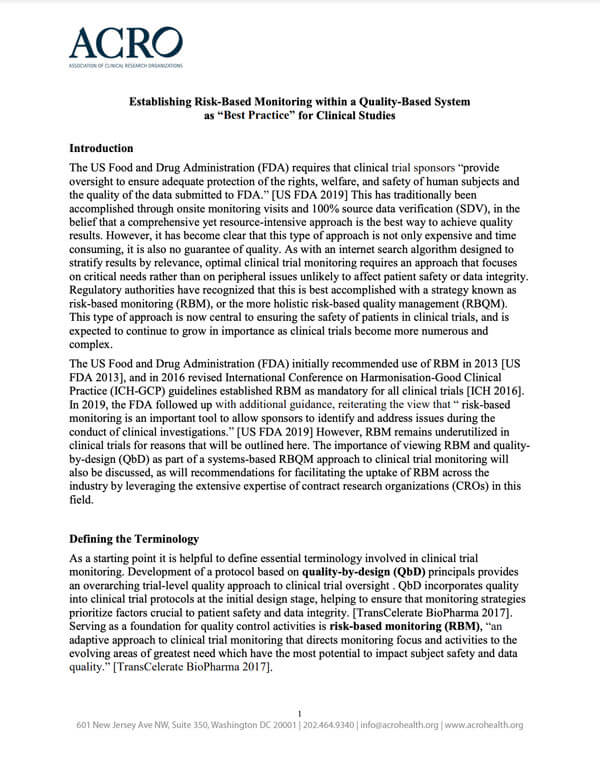Risk-Based Monitoring (RBM) makes an impact.
The US Food and Drug Administration (FDA) requires that clinical trial sponsors “provide oversight to ensure adequate protection of the rights, welfare, and safety of human subjects and the quality of the data submitted to FDA.” [US FDA 2019] This has traditionally been accomplished through onsite monitoring visits and 100% source data verification (SDV), in the belief that a comprehensive yet resource-intensive approach is the best way to achieve quality results. However, it has become clear that this type of approach is not only expensive and time consuming, it is also no guarantee of quality. As with an internet search algorithm designed to stratify results by relevance, optimal clinical trial monitoring requires an approach that focuses on critical needs rather than on peripheral issues unlikely to affect patient safety or data integrity. Regulatory authorities have recognized that this is best accomplished with a strategy known as risk-based monitoring (RBM), or the more holistic risk-based quality management (RBQM). This type of approach is now central to ensuring the safety of patients in clinical trials, and is expected to continue to grow in importance as clinical trials become more numerous and complex.
The US Food and Drug Administration (FDA) initially recommended use of RBM in 2013 [US FDA 2013], and in 2016 revised International Conference on Harmonisation-Good Clinical Practice (ICH-GCP) guidelines established RBM as mandatory for all clinical trials [ICH 2016]. In 2019, the FDA followed up with additional guidance, reiterating the view that “ risk-based monitoring is an important tool to allow sponsors to identify and address issues during the conduct of clinical investigations.” [US FDA 2019] However, RBM remains underutilized in clinical trials for reasons that will be outlined here. The importance of viewing RBM and quality-by-design (QbD) as part of a systems-based RBQM approach to clinical trial monitoring will also be discussed, as will recommendations for facilitating the uptake of RBM across the industry by leveraging the extensive expertise of contract research organizations (CROs) in this field.


